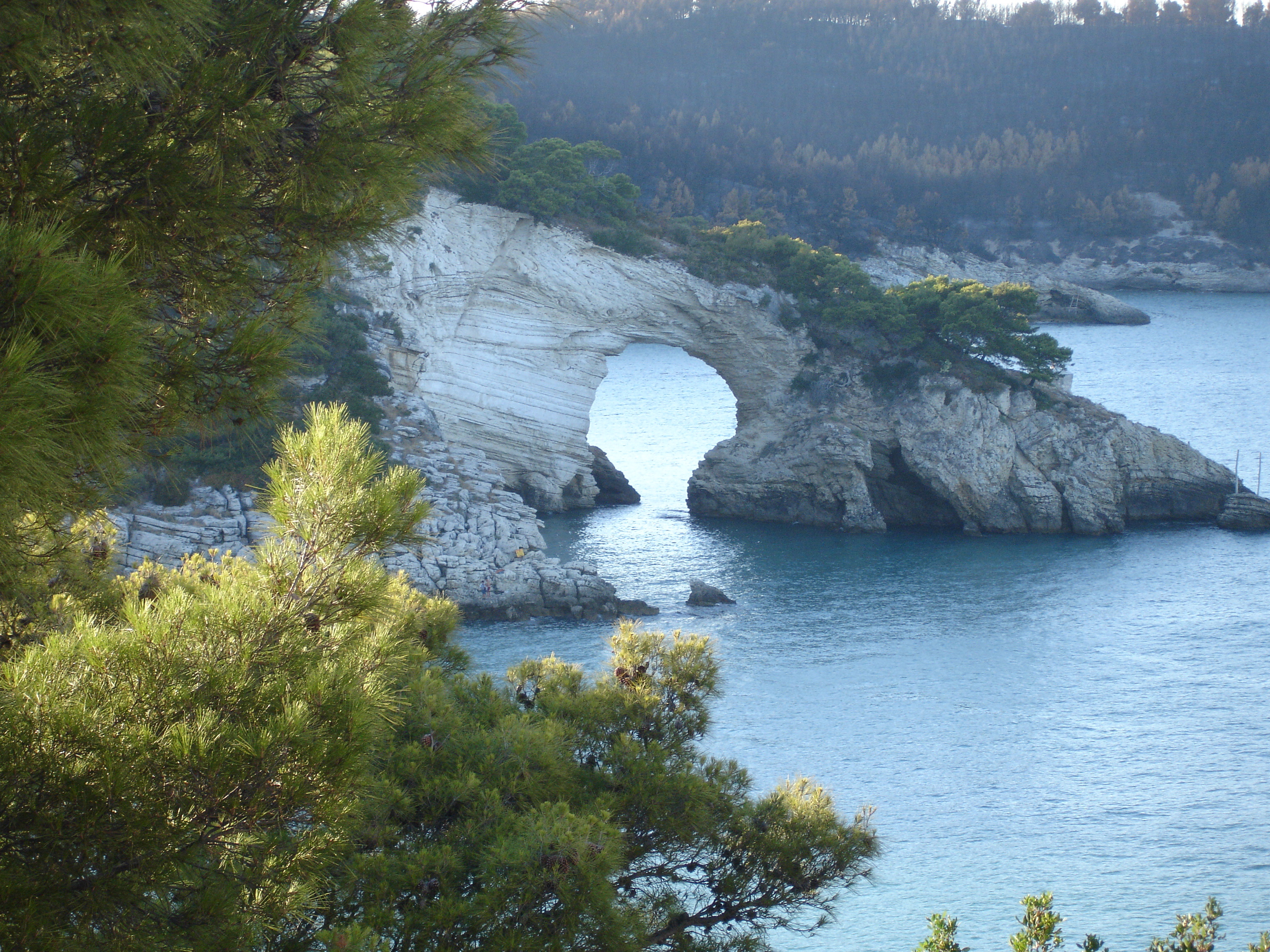Vieste Miasto on:
[Wikipedia]
[Google]
[Amazon]
Vieste (; nap, label= Viestano, Vìst) is a town, '' comune'' and former Catholic bishopric in the province of Foggia, in the
 In medieval times, the port was frequently attacked by pirates,
In medieval times, the port was frequently attacked by pirates,
 The town is bordered by
The town is bordered by

 Vieste's best-known
Vieste's best-known
Official website
tourism website
{{Authority control Castles in Italy Coastal towns in Apulia
Apulia
it, Pugliese
, population_note =
, population_blank1_title =
, population_blank1 =
, demographics_type1 =
, demographics1_footnotes =
, demographics1_title1 =
, demographics1_info1 =
, demographic ...
region of southeast Italy. A marine resort in Gargano
Gargano (, Gargano Apulian Italo-Romance arˈgæːnə is a historical and geographical sub-region in the province of Foggia, Apulia, southeast Italy, consisting of a wide isolated mountain massif made of highland and several peaks and forming ...
, Vieste has received Blue Flags for the purity of its waters from the Foundation for Environmental Education
The Foundation for Environmental Education (FEE) is a non-governmental, non-profit organisation promoting sustainable development through environmental education. FEE is active through five programmes; Blue Flag, Eco-Schools, Young Reporters fo ...
. The area covered by the comune is included in the Gargano National Park.
History
Saracens
file:Erhard Reuwich Sarazenen 1486.png, upright 1.5, Late 15th-century Germany in the Middle Ages, German woodcut depicting Saracens
Saracen ( ) was a term used in the early centuries, both in Greek language, Greek and Latin writings, to refer ...
and other enemies of the Kingdom of Naples
The Kingdom of Naples ( la, Regnum Neapolitanum; it, Regno di Napoli; nap, Regno 'e Napule), also known as the Kingdom of Sicily, was a state that ruled the part of the Italian Peninsula south of the Papal States between 1282 and 1816. It was ...
.
In 1554 approximately 7,000 inhabitants were enslaved by the Turks. Those deemed too elderly or infirm for slavery were executed. This event is commemorated in an annual ceremony.
Geography
 The town is bordered by
The town is bordered by Mattinata
Mattinata ( nap, label= Foggiano, Matenéte) is a seaside resort town and ''comune'' (municipality) in the province of Foggia, Apulia, southern Italy.
Geography
The only town in Apulia facing south the Adriatic sea, Mattinata is part of the ...
, Monte Sant'Angelo, Peschici
Peschici is a town and ''comune'' in the province of Foggia in the Apulia region of southeast Italy.
Famous for its seaside resorts, its territory belongs to the Gargano National Park and to the Gargano Mountain Community.
Geography
Peschici is ...
and Vico del Gargano
Vico del Gargano is a village and ''comune'' in the province of Foggia in the Apulia region of southeast Italy. Called the "Village of Love", it is part of the Gargano National Park and the Mountain Community of Gargano.
The town is bordered by ...
. The coast has interesting geology; cliffs composed of chalk-like white limestone, sparsely banded with thin layers of flint. Next to the town there are two large, straight beaches. The remainder of the coast is composed of gulfs and small, hidden sandy beaches. Erosion by water and wind has shaped the calcareous rock into grotto
A grotto is a natural or artificial cave used by humans in both modern times and antiquity, and historically or prehistorically. Naturally occurring grottoes are often small caves near water that are usually flooded or often flooded at high ti ...
es and arches. The coast is rugged, and many interesting sights are accessible only by sea.
Pizzomunno and its legend

 Vieste's best-known
Vieste's best-known landform
A landform is a natural or anthropogenic land feature on the solid surface of the Earth or other planetary body. Landforms together make up a given terrain, and their arrangement in the landscape is known as topography. Landforms include hills, ...
is ''Pizzomunno'', a sea stack standing high, situated on the ''Spiaggia del Castello'' ("Castle Beach").
The stone connects to a local legend about a fisherman called Pizzomunno whose true love was captured by sirens and imprisoned under the sea. The story tells how he swam out to rescue her, but became exhausted and gave up hope, turning to stone. Other myths about the rock are that it disappears on some nights, and that a wish made while circling it will come true.
Economy
Until a few decades ago, Vieste's primary economy was fishing and agriculture. Now tourism, with hotels, resorts and camping facilities, has transformed the town's appearance, economy and lifestyle.Notable buildings
* A castle, with a triangular shape and bastions at its vertexes. * Vieste Cathedral in Apulian Romanesque style. It has a basilica plan with a nave and two aisles. Itsbell tower
A bell tower is a tower that contains one or more bells, or that is designed to hold bells even if it has none. Such a tower commonly serves as part of a Christian church, and will contain church bells, but there are also many secular bell tower ...
was rebuilt in Baroque style in the 18th century after the previous one collapsed.
* Vieste Lighthouse, built in 1867
See also
* Isola Santa Eufemia LighthouseReferences
External links
Official website
tourism website
{{Authority control Castles in Italy Coastal towns in Apulia